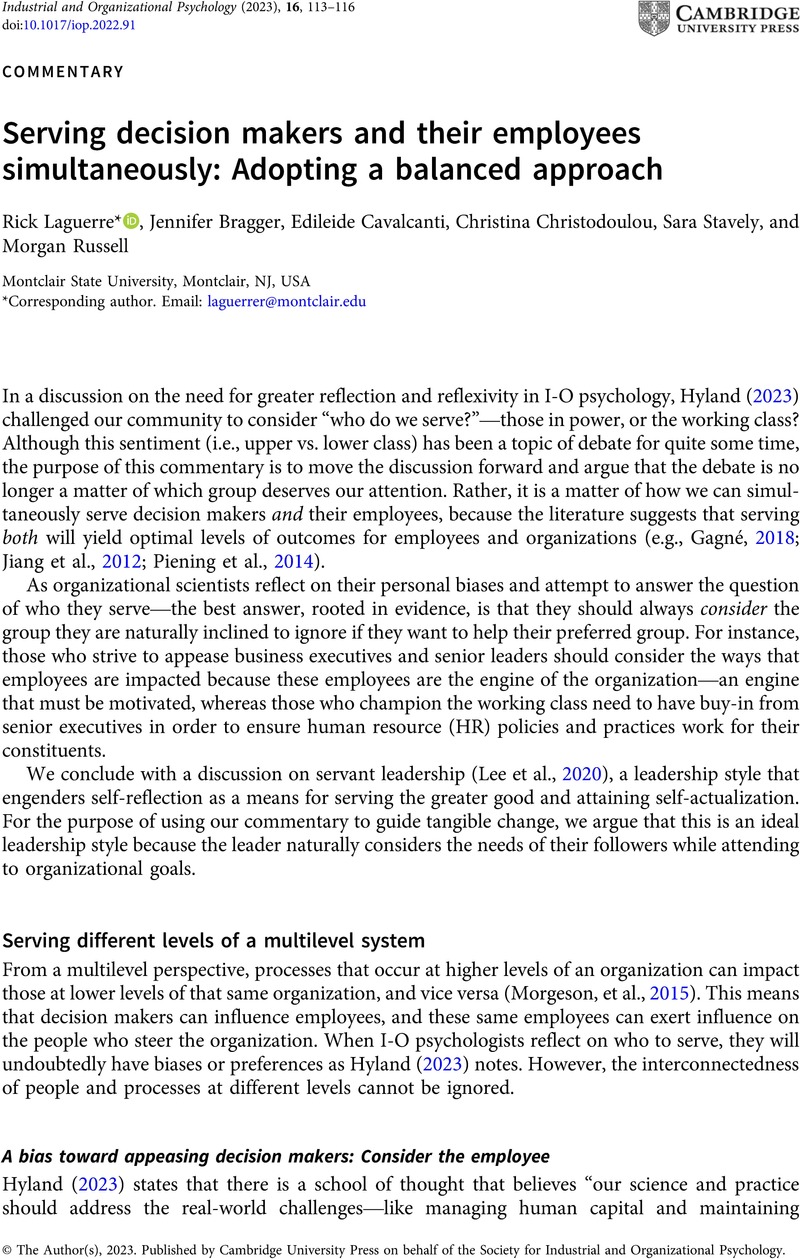No CrossRef data available.
Article contents
Serving decision makers and their employees simultaneously: Adopting a balanced approach
Published online by Cambridge University Press: 09 March 2023
Abstract
An abstract is not available for this content so a preview has been provided. Please use the Get access link above for information on how to access this content.

- Type
- Commentaries
- Information
- Copyright
- © The Author(s), 2023. Published by Cambridge University Press on behalf of the Society for Industrial and Organizational Psychology
References
Bragger, J. D., Alonso, N. A., D’Ambrosio, K., & Williams, N. (2021). Developing leaders to serve and servants to lead. Human Resource Development Review, 20(1), 9–45.CrossRefGoogle Scholar
Eva, N., Robin, M., Sendjaya, S., Van Dierendonck, D., &Liden, R.C. (2019). Servant leadership: Asystematic review and call for future research. The Leadership Quarterly, 30(1), 111–132.CrossRefGoogle Scholar
Gagné, M. (2018). From strategy to action: Transforming organizational goals into organizational behavior. International Journal of Management Reviews, 20, S83–S104. https://doi.org/10.1111/ijmr.12159
CrossRefGoogle Scholar
Gjerde, S., & Alvesson, M. (2020). Sandwiched: Exploring role and identity of middle managers in the genuine middle. Human Relations, 73(1), 124–151.CrossRefGoogle Scholar
Hyland, P. (2023) All we like sheep: The need for reflection and reflexivity in I-O psychology. Industrial and Organizational Psychology, 16.Google Scholar
Jiang, K., Lepak, D. P., Hu, J., & Baer, J. C. (2012). How does human resource management influence organizational outcomes? A meta-analytic investigation of mediating mechanisms. Academy of Management Journal, 55(6), 1264–1294. https://doi.org/10.5465/amj.2011.0088
CrossRefGoogle Scholar
Lee, A., Lyubovnikova, J., Tian, A. W., & Knight, C. (2020). Servant leadership: A meta-analytic examination of incremental contribution, moderation, and mediation. Journal of Occupational and Organizational Psychology, 93(1), 1–44.CrossRefGoogle Scholar
Morgeson, F. P., Mitchell, T. R., & Liu, D. (2015). Event system theory: An event-oriented approach to the organizational sciences. Academy of Management Review, 40(4), 515–537.Google Scholar
Piening, E. P., Baluch, A. M., & Ridder, H.-G. (2014). Mind the intended-implemented gap: Understanding employees’ perceptions of HRM. Human Resource Management, 53(4), 545–567. https://doi.org/10.1002/hrm.21605
CrossRefGoogle Scholar




